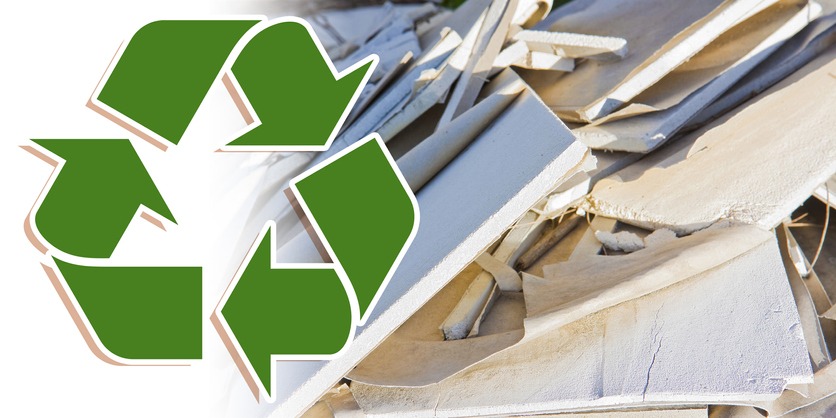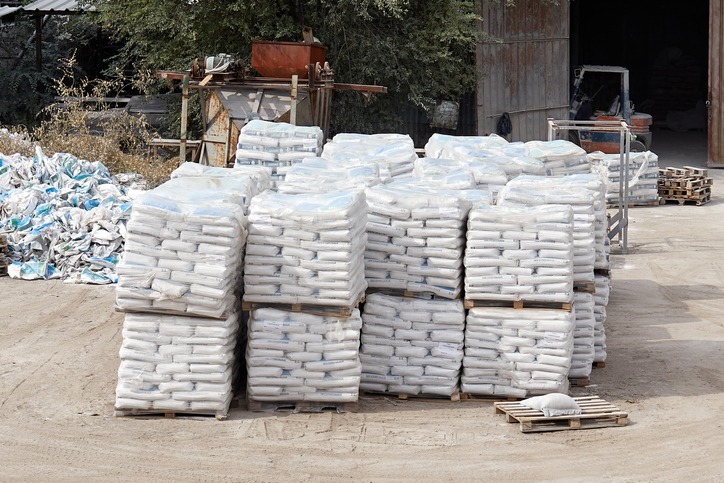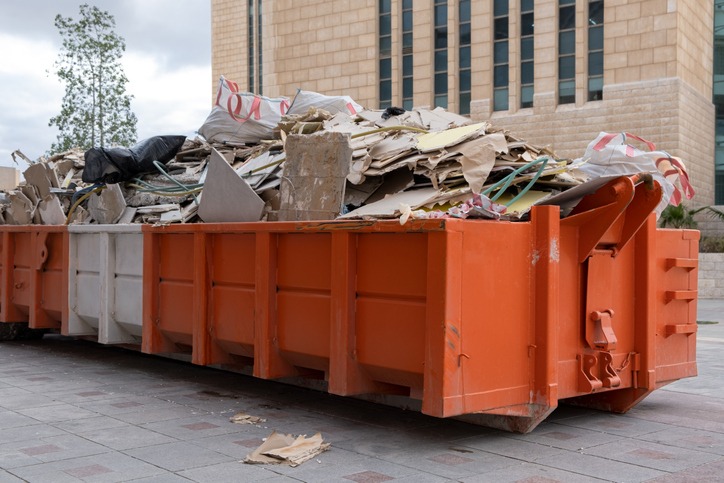You might think that your leftover drywall is as useless as a screen door on a submarine, but before you toss it into the nearest dumpster, consider the myriad of ways you can give it a second life. By recycling or repurposing your drywall waste, you’re not just saving the planet from the clutches of unnecessary landfill expansion; you’re also embracing a more sustainable lifestyle. Whether it’s using it for garden soil improvement, contributing to the circular economy, or donating to local projects, the possibilities are both environmentally significant and surprisingly simple.
But how exactly can you start this journey? Let’s explore the practical steps and innovative solutions that can transform your waste management practices, without adding to the ever-growing environmental footprint.
Understanding Drywall Recycling
Drywall recycling transforms waste into valuable resources, preventing around 40 million tons from filling landfills each year. When you’re renovating or demolishing spaces, drywall remnants typically end up as waste. However, these materials don’t have to contribute to the growing landfill problem. By taking your drywall waste to a local recycling center, you’re stepping into a significant circle of waste management.
Recycled drywall becomes a raw material for new drywall production or serves as an essential component in cement, showcasing a prime example of a circular economy in action. This process not only conserves natural resources but also supports industries in reducing their environmental footprint.
Finding a local recycling center that accepts drywall might take a bit of research, but it’s a vital step in responsible waste management. Once you’ve located a center, make sure the drywall is clean and free from contaminants to facilitate the recycling process. Engaging in drywall recycling is a straightforward yet impactful way to contribute to environmental sustainability and support waste management efforts.
Benefits of Recycling Drywall
Recycling approximately 40 million tons of drywall annually, you play an important role in greatly reducing landfill waste and conserving natural resources. This practice not only minimizes the environmental impact of construction materials but also supports sustainable development in the construction industry. By choosing to recycle drywall, you’re contributing to a cycle that benefits both the environment and the economy.
Here are three great benefits of recycling drywall:
- Preservation of Natural Resources: Repurposing drywall reduces the demand for new gypsum mining. This means less disruption to natural ecosystems and a lower need to exploit virgin materials.
- Reduction in Toxic Gas Emissions: Properly recycling drywall helps avoid the formation of hydrogen sulfite gas, a toxic byproduct that can be released if drywall waste decomposes in landfills. This greatly reduces its potential environmental impact.
- Supports the Circular Economy: Recycled drywall can be used in manufacturing new construction materials or as a soil amendment, promoting sustainable practices. This not only closes the loop on materials but also contributes to reducing the overall environmental footprint of construction activities.
Preparing Drywall for Recycling
Before recycling your drywall, you’ll need to make sure it’s free from contaminants like screws and nails. This means carefully removing any metal or unwanted materials that could hinder the recycling process. Identifying which pieces can be recycled is your first step toward contributing to a more sustainable environment.
Identifying Recyclable Drywall
To prepare drywall for recycling, make sure it’s clean, uncontaminated, and devoid of any metal fixtures. Recycling drywall waste is a vital step in managing construction materials sustainably. By identifying recyclable drywall, you’re contributing to reducing the amount of waste that ends up in landfills.
Here’s how to identify recyclable drywall:
- Check for Cleanliness: The drywall must be free from paint, adhesives, and other contaminants.
- Inspect for Moisture Damage: Make sure there’s no excessive moisture damage or mold growth.
- Remove Metal Components: Screws, nails, and corner beads must be removed.
Understanding these steps helps make sure that the drywall you’re recycling is suitable for the process, supporting sustainable practices in construction waste management.
Removing Contaminants Carefully
Ensuring your drywall is free of screws and nails is the first step in preparing it for recycling. These contaminants can compromise the quality of recycled gypsum, making it imperative to remove them thoroughly. You’ll also need to separate the paper from the gypsum, as mixed materials can hinder the recycling process. Carefully handle your drywall to prevent any damage to the gypsum. This caution helps maintain the integrity of the material for efficient recycling. Before sending your drywall for recycling, conduct a meticulous inspection for any foreign materials. Removing these contaminants is critical for sustaining recycling efficiency and ensuring the recycled gypsum meets quality standards. By following these steps, you contribute to a more sustainable recycling practice.
Finding Drywall Recycling Facilities
After preparing your drywall for recycling, you’ll need to find a facility that can process it. Start by identifying local recycling centers or construction waste facilities that accept drywall. You can also search online or tap into construction networks to locate these recycling options efficiently.
Identify Local Recycling Centers
Finding a local recycling center that accepts drywall often involves a quick internet search or a phone call to understand their specific guidelines and services. Here’s what you should know:
- Local recycling centers may set quantity limits and have rules about contamination. It’s important to check these before planning your disposal.
- Contacting these centers directly can clarify their policies and procedures for drywall recycling, ensuring you’re compliant.
- Some offer convenient services like drop-off or pick-up, making the disposal process smoother.
Utilizing local recycling centers for drywall disposal promotes sustainable waste management practices within the community. It’s an environmentally responsible choice that prevents unnecessary landfill accumulation.
Online Search Strategies
To locate drywall recycling facilities near you, start by using online search engines tailored to this purpose. Websites like Earth911 or 1-800-RECYCLING are great resources to find centers that specialize in recycling drywall materials and other construction waste. It’s important to verify each facility’s acceptance criteria, hours of operation, and any potential fees before you make a trip.
| Emotion | Action | Result |
|---|---|---|
| Relief | Searching online | Found |
| Satisfaction | Verifying details | Confirmed |
| Accomplishment | Recycling drywall | Contributed |
Utilize Construction Networks
Beyond online searches, tapping into construction networks can greatly aid in locating drywall recycling facilities near you. These networks are treasure troves of information, often harboring resources and contacts dedicated to the responsible disposal of drywall waste. By engaging with construction professionals, you’re not just finding recycling options; you’re also gleaning insights into the most effective practices for drywall recycling. Here’s how you can make the most of construction networks:
- Connect with Local Contractors: Many have firsthand knowledge about drywall disposal and recycling.
- Attend Industry Meetings: These gatherings can introduce you to broader networks focused on responsible disposal.
- Engage in Online Forums: Such platforms are ripe with discussions on locating the right facilities for drywall recycling.
Utilizing construction networks can significantly streamline your search, ensuring you contribute to more sustainable waste management practices.
Innovative Uses for Recycled Drywall
Recycled drywall breathes new life into construction and agriculture through innovative repurposing methods. When you think about recycling, drywall might not be the first thing that comes to mind. Yet, its potential for reuse is vast and valuable. Ground-up recycled drywall serves as an exceptional soil amendment, enriching the earth and fostering healthier plant growth. This is because it can be transformed into gypsum powder, a substance known for its soil conditioning properties.
By choosing to recycle drywall, you’re not only reducing the demand for virgin materials but also contributing to more sustainable construction practices. The process of turning old drywall into new panels or gypsum powder minimizes waste in landfills and helps prevent the release of harmful gases that occur when these materials are disposed of improperly.
Additionally, the use of recycled drywall in agriculture as a soil enhancer underscores the versatility and environmental benefits of this practice. It’s a clear win-win: you’re supporting the planet while potentially improving your garden or farm’s yield. So, when you’re next faced with drywall waste, remember its potential for a second, valuable life in both construction and agriculture.
Drywall Waste Management Practices
Effective drywall waste management practices greatly reduce the environmental toll of construction projects. As you tackle the challenges of construction waste, understanding how to properly dispose of or recycle drywall is important. These materials, when not managed correctly, can have significant environmental impacts. However, with the right approach, you can turn drywall waste into a resource rather than a problem.
Here are three key practices to take into account:
- Separate Contaminants: Before recycling, it is important to remove any screws, nails, or other contaminants from the drywall. This step ensures that the recycled material is clean and usable for future projects.
- Recycle: Recycling drywall prevents the release of hydrogen sulfite and other toxic gases that occur when these materials decompose. By opting to recycle, you’re not only reducing waste but also supporting sustainable construction practices.
- Support a Circular Economy: Engaging in responsible drywall waste management promotes the reuse and recycling of construction materials. This approach contributes to a circular economy, where materials are kept in use for as long as possible, reducing the need for new gypsum extraction and minimizing environmental impact.
Environmental Impact of Drywall Disposal
Understanding the right ways to manage drywall waste, it’s also important to take into account the environmental impact of its disposal. When you improperly dispose of drywall, you’re not just filling up the landfills, which already struggle to handle the massive volume of waste generated every year; you’re also risking the contamination of groundwater and the release of harmful gases. These pollutants can lead to severe health problems for communities living nearby.
Recycling is a beacon of hope in this scenario. By choosing to have your drywall waste recycled and turned into new products, you’re greatly reducing the need for fresh gypsum mining, which has its own set of environmental drawbacks. However, it’s important to remember that not all drywall waste can be easily recycled. Demolition waste, for instance, often contains contaminated drywall that requires specialized recycling processes.
The gist is that managing your drywall waste responsibly doesn’t just help you stay on the right side of environmental agencies; it also plays an important part in preventing pollution and reducing the risk of health problems associated with improper waste disposal.
Regulations and Compliance for Disposal
Exploring the maze of regulations for drywall disposal ensures you’re not only compliant but also contributing to a safer environment. Environmental agencies demand strict adherence to disposal guidelines, primarily because gypsum makes up a significant portion of drywall, and its improper disposal can lead to the release of toxic gases. Additionally, the potential for asbestos in older drywall adds a layer of complexity to disposal practices.
To navigate these regulations effectively, keep in mind:
- Asbestos Testing: Some jurisdictions require testing for asbestos before disposal. This step is vital to protect public health and avoid legal repercussions.
- Adherence to Safety Standards: Violating disposal regulations can result in hefty fines and legal consequences. It’s crucial to understand and follow the specific requirements in your area.
- Proper Documentation: Maintaining accurate records of your disposal practices is essential. This documentation can serve as evidence of compliance with environmental standards.
Community and Industry Efforts
Community and industry initiatives play an important role in enhancing drywall recycling efforts, greatly cutting down on landfill waste. When you get involved, whether through community action or supporting industry initiatives, you’re contributing to a significant reduction in environmental impact. Local recycling centers often serve as the backbone of these efforts, accepting drywall for processing and ensuring it doesn’t end up in the landfill. You’ll find that these centers are vital for managing waste responsibly.
Additionally, collaboration with construction companies and contractors is key to streamlining the recycling process. By working together, they can reduce disposal costs and make recycling a more attractive option. It’s a win-win situation where the environment benefits, and companies save money.
Public education campaigns also play a pivotal role. They raise awareness about the benefits of drywall recycling, encouraging you and your community to participate more actively in waste reduction. By understanding the impact of your actions, you can make more informed decisions about waste management. So, next time you’re undertaking a renovation, remember that your choices can contribute to a more sustainable future.
Conclusion
To sum up, you’ve got plenty of options for managing drywall waste responsibly. By recycling, you’re not just cutting down on landfill waste; you’re also supporting a sustainable future. Remember, it’s about finding the right facilities, preparing your drywall properly, and exploring innovative uses for recycled materials. Stay informed on regulations and get involved in community efforts. Together, we can make a significant difference in reducing environmental impact and promoting a circular economy. Let’s commit to responsible disposal and recycling practices.








